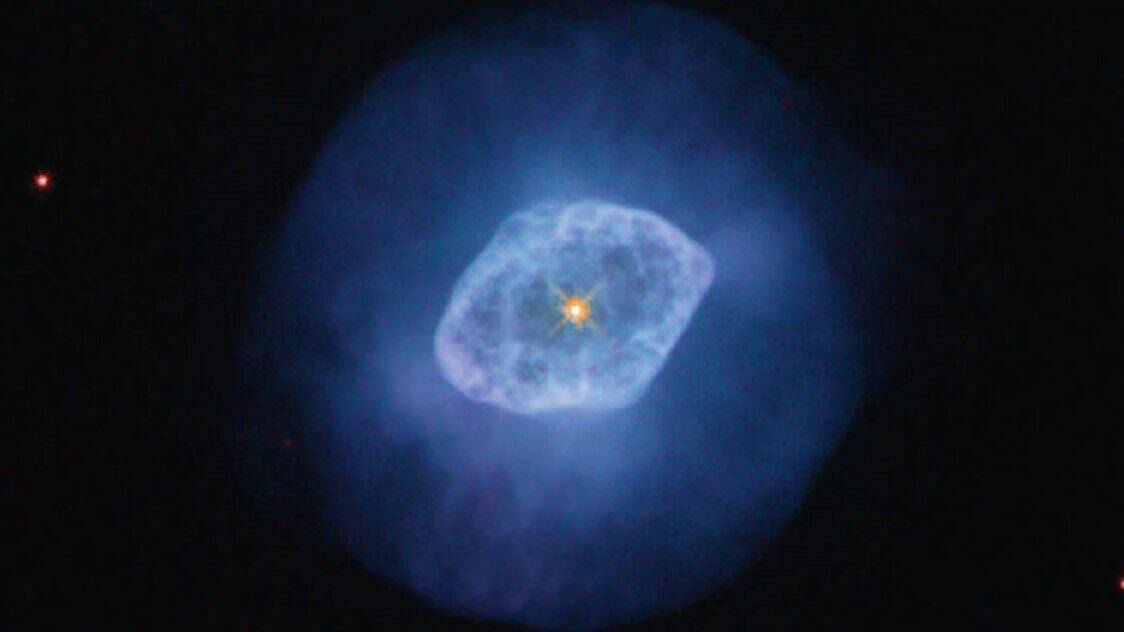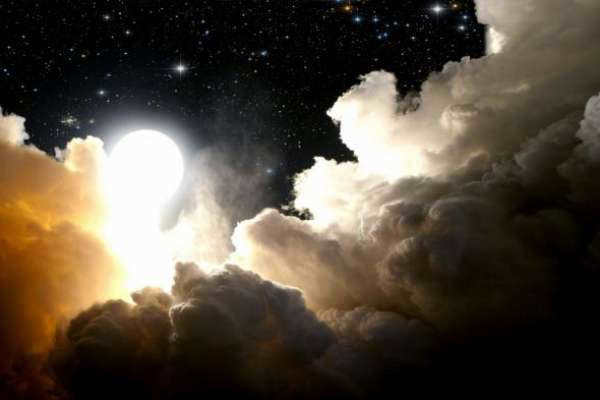
We are all familiar with the concept that space is something that exists outside of our planet, encompassing the entire universe. Essentially, space is an infinite expanse that extends in all directions, containing galaxies and stars, black holes and planets, as well as space debris and various other objects. The prevailing belief is that there are other planets, and possibly even entire galaxies, that are home to intelligent beings.
A glimpse into the past
The mid-20th century is etched in the collective memory as a time of intense competition in space exploration, with the USSR emerging as the victor. In 1957, the world witnessed the creation and launch of the first-ever artificial satellite, followed shortly thereafter by the historic journey of the first living being into space.
In 1959, an artificial satellite of the Sun successfully entered orbit, while the “Luna-2” station achieved the remarkable feat of landing on the surface of the Moon. It wasn’t until 1960 that the legendary duo, Belka and Strelka, embarked on their space adventure, paving the way for human exploration of space, which occurred a year later.
1962 will forever be remembered as the year of the groundbreaking group flight of spacecraft, while 1963 witnessed another milestone: the first woman entering orbit. It took two more years for humanity to venture into the vast expanse of open space.
Subsequent years in our rich history were marked by a series of significant events and achievements in the realm of space exploration.
An international space station was established in 1998, marking a significant milestone in space exploration. It served as a platform for satellite launches, orbital station operations, and manned missions from various countries.
The Meaning of Space
From a scientific perspective, space refers to specific regions within the universe that surround celestial bodies and their atmospheres. However, it is not completely empty, as it contains trace amounts of hydrogen and interstellar matter. Additionally, electromagnetic radiation has been detected within its boundaries.
Currently, the exact extent of space remains unknown to scientists. Astrophysicists and radio astronomers acknowledge that their instruments are limited in their ability to observe the entire cosmos, despite their range covering 15 billion light years.
Scientific theories do not completely rule out the potential existence of universes similar to ours, although there is currently no evidence to support this idea. In essence, space itself can be considered as a universe, a distinct world with its own order and physicality.
The process of space exploration
The initial forays into space involved the use of animals, as humans were apprehensive but curious about venturing into the unknown. Dogs, pigs, and monkeys were utilized as pioneers, with some successfully returning while others did not.
Currently, humans are actively engaged in the exploration of outer space. It has been scientifically proven that the absence of gravity has adverse effects on human health. Fluids within the body are unable to circulate properly, leading to a loss of calcium. Additionally, individuals tend to gain weight and experience digestive and nasal issues while in space.
In the vast expanse of outer space, nearly every individual experiences a condition known as “space sickness”. This affliction manifests in various symptoms such as nausea, dizziness, and headaches. Sadly, one of the consequences of this ailment is the development of hearing issues.
Fascinating Trivia
Did you know that in space, one can witness the break of dawn approximately 16 times within a single day? However, this frequent occurrence of sunrise negatively impacts the body’s natural biorhythms, making it difficult to maintain a regular sleep schedule.
Interestingly, mastering the art of using the toilet in space is considered a complex science. Prior to embarking on their space missions, astronauts undergo extensive training with a toilet simulator. This training period allows them to perfect their techniques. Although scientists initially attempted to incorporate a miniaturized toilet within the spacesuit itself, this proved to be unsuccessful. Consequently, astronauts now rely on the use of ordinary diapers.
Upon returning to Earth, every astronaut is confronted with the perplexing phenomenon of objects falling downwards. This is a result of the strong gravitational force present on our planet, which is absent in the weightlessness of space.
Interestingly, the process of snoring is not experienced by individuals in outer space. It is still challenging to provide a precise explanation for this phenomenon.
Fatalities in Space
Women who have undergone breast augmentation surgery will never have the opportunity to explore the vastness of space. The reason behind this is quite simple – their implants have the potential to rupture. Unfortunately, a similar fate could befall any individual’s lungs if they were to find themselves in the vacuum of space without a proper spacesuit. This would occur as a result of decompression, causing the mucous membranes of the mouth, nose, and eyes to essentially boil.
Space in ancient philosophy
The concept of cosmos has long been an important aspect in the field of philosophy, serving as a term to describe the entirety of the world. Heraclitus, over 500 years ago BC, referred to this concept as “worldbuilding,” a notion that was later supported by prominent pre-Socratic philosophers such as Parmenides, Democritus, Anaxagoras, and Empedocles.
Both Plato and Aristotle sought to depict the cosmos as a supreme and harmonious entity, embodying innocence and aesthetic beauty. The ancient Greeks’ understanding of outer space was largely influenced by their mythological beliefs.
In his book “On the Sky,” Aristotle attempts to draw a comparison between these two concepts and highlight their similarities and differences. Plato’s dialogue “Timaeus” explores the interconnectedness between the cosmos and its creator. The philosopher posited that the cosmos emerged in a sequential manner from both matter and ideas, with the creator infusing it with a soul and dividing it into various elements.
The end result was a cosmos that possesses intelligence and exists as a unified and beautiful entity, encompassing both the soul and body of the world.
Exploring Space in 19th and 20th Century Philosophy
The advent of the industrial revolution in the modern era brought about a complete transformation in the way outer space was perceived. A new “mythology” became the foundation for understanding this concept.
During the turn of the century, a philosophical movement known as Cubism emerged, incorporating the laws, formulas, logical constructions, and idealizations of ancient Greek Orthodox ideas, which were initially borrowed from ancient philosophers. Cubism served as a significant attempt for individuals to understand themselves, the world, their place in it, their calling, and to define the fundamental values that shape their lives.
Russian cosmism did not stray far from ancient concepts, but it altered their foundation. Now, cosmos is something in philosophy that possesses design elements rooted in the principles of Orthodox personalism. It is something historical and evolutionary, with the potential to improve. Biblical lore served as the foundation.
In the perspective of 19-20th century philosophers, cosmos merges art and religion, physics and metaphysics, knowledge of the world around us and human nature.
It can be logically deduced that the cosmos is a unified entity encompassing space. Philosophical and scientific concepts regarding the cosmos are essentially similar, except for ancient times. The subject of “space” has always been in high demand and has piqued the curiosity of individuals.
At present, the universe holds numerous enigmas and mysteries, waiting to be unraveled by you and me. Every individual who ventures into space uncovers something novel and extraordinary, and shares their experiences with humanity.
Outer space comprises various forms of matter and objects. While some are extensively examined by scientists, the true nature of others remains incomprehensible.
Every single one of us has undoubtedly been informed on multiple occasions that space is something that exists beyond our planet, and it is referred to as the Universe. Essentially, space is an expanse that extends endlessly in every direction, encompassing galaxies and stars, black holes and planets, cosmic dust and various other celestial entities. It is widely believed that there exist other planets, and potentially even entire galaxies, that are also home to intelligent beings.
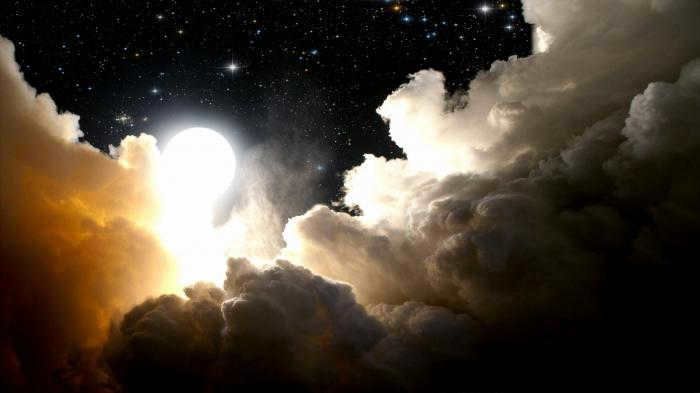
A glimpse into the past
The mid-20th century holds a significant place in history due to the intense space race, which was ultimately won by the USSR. In 1957, the world witnessed the creation and launch of the first artificial satellite, followed shortly after by the historic journey of the first living organism into space.
Two years later, an artificial satellite of the Sun successfully entered orbit, and a remarkable spacecraft named “Luna-2” managed to land on the surface of the Moon. The iconic duo, Belka and Strelka, made their journey to space in 1960, and just a year later, a human being had the privilege of venturing into the great unknown as well.
The year 1962 will forever be remembered for the monumental group flight of spacecraft, while 1963 marked another significant milestone as a woman first entered orbit. It took another two years for mankind to successfully explore the vastness of outer space.
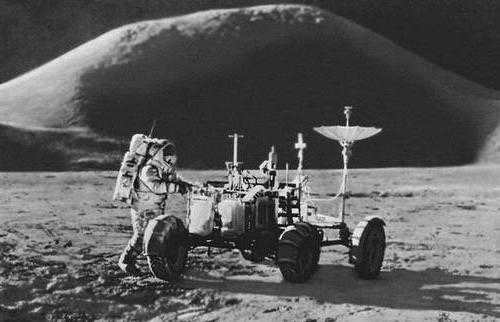
Every year in our history has been distinguished by significant events in the field of space exploration.
It wasn’t until 1998 that an internationally significant space station was established. This included satellite launches, the establishment of orbital stations, and numerous manned flights from various countries.
What it signifies
According to the scientific perspective, space refers to specific regions within the universe that encompass celestial bodies and their atmospheres. However, it is important to note that space is not completely devoid of matter. Extensive research has proven the presence of hydrogen and interstellar matter within it. Furthermore, scientists have also confirmed the existence of electromagnetic radiation within its boundaries.
Currently, the scientific community does not possess definitive knowledge regarding the exact extent of space. Astrophysicists and radio astronomers assert that their instruments are incapable of observing the entire cosmos. This limitation persists despite the fact that their observations cover a span of 15 billion light years.
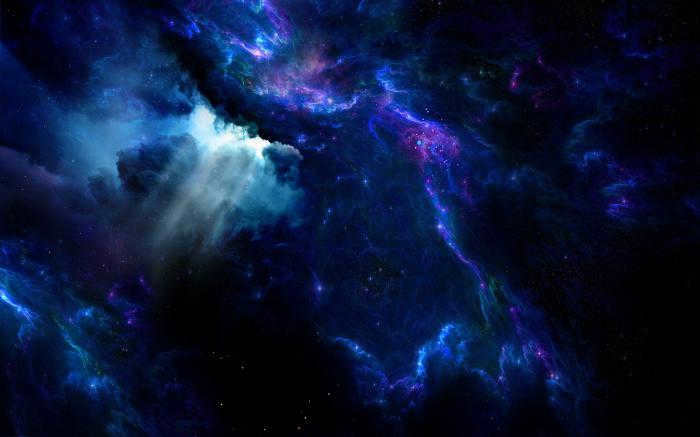
Scientific theories do not dismiss the potential existence of universes similar to our own, although there is no definitive confirmation of this either. In essence, space serves as a universe, a realm characterized by organization and materialization.
The process of space exploration
Animals were the first to venture into space. Despite initial fears, humans desired to investigate uncharted territories, leading to the use of dogs, pigs, and monkeys as pioneers. Some of these animals returned safely, while others did not.
Currently, humans are actively engaged in the exploration of outer space. It has been scientifically established that weightlessness negatively impacts human health. This condition hinders the proper movement of bodily fluids, resulting in calcium loss. Additionally, individuals in space often experience weight gain, intestinal issues, and nasal congestion.
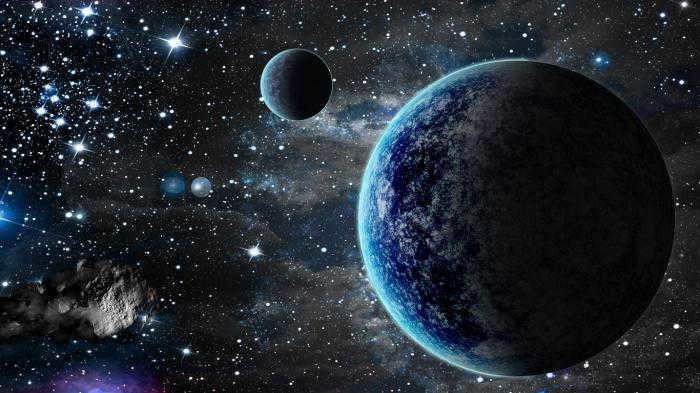
When people venture into outer space, they often experience a condition known as “space sickness”. This condition is characterized by symptoms such as nausea, dizziness, and headaches. Unfortunately, one of the side effects of space sickness is hearing impairment.
Curious information
The vastness of space provides the opportunity to witness the sunrise approximately 16 times a day. This constant exposure to sunlight can have a negative impact on biorhythms and disrupt normal sleep patterns.
Interestingly, mastering the process of using the toilet in space is a complex science. Before astronauts can achieve proficiency, they must practice on a simulated model. This training period allows them to perfect the necessary techniques. Scientists attempted to create a miniature toilet within the spacesuit itself, but their efforts proved unsuccessful. Instead, astronauts rely on regular diapers.
Upon returning to Earth, every astronaut is temporarily puzzled by the phenomenon of objects falling downward.
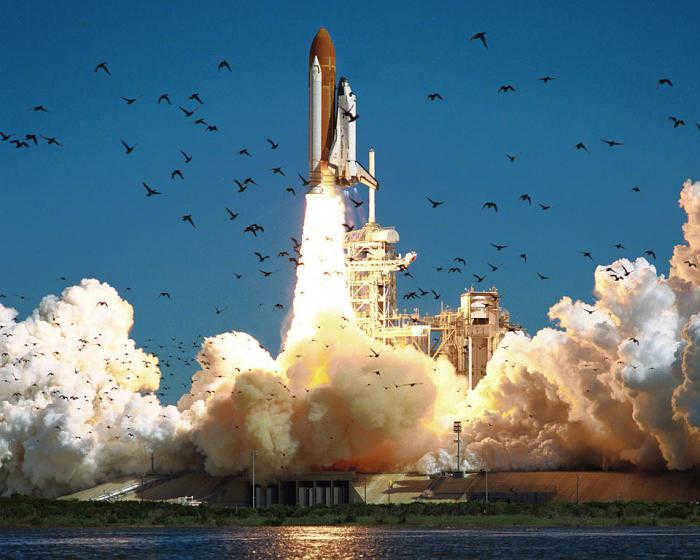
Only a few individuals are aware of the reason behind the initial use of tubes or briquettes for food in outer space. Consuming food in the absence of gravity poses a significant challenge. Therefore, the food was dehydrated in advance to facilitate the process.
Interestingly, individuals who snore do not experience this difficulty while in space. Providing a precise explanation for this phenomenon remains a challenge.
Death in the Void
Those women who opt for artificial breast augmentation will forever be denied the opportunity to experience the vastness of space. The reason is quite straightforward – implants have the potential to rupture and explode. Regrettably, a similar fate could befall anyone’s lungs if they were to venture into space without proper protective gear. This would occur due to rapid decompression. The delicate mucous membranes of the mouth, nose, and eyes would quite literally boil over.
The concept of cosmos, which refers to the entirety of the world, holds a significant place in philosophy. It was first introduced by Heraclitus over 500 years ago BC, who described it as “worldbuilding”. This idea was further developed and supported by influential pre-Socratic philosophers such as Parmenides, Democritus, Anaxagoras, and Empedocles.
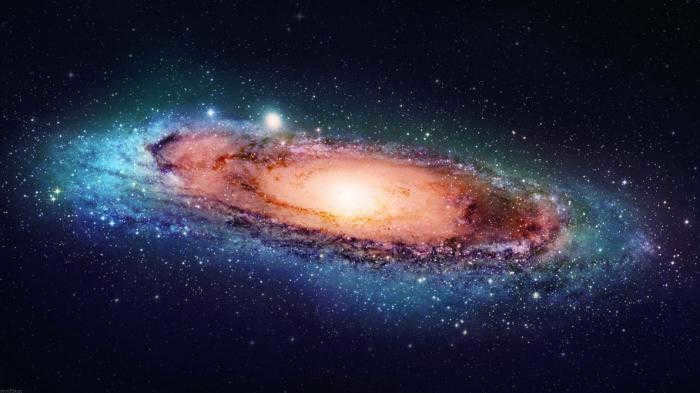
Plato and Aristotle endeavored to depict the universe as a supreme entity, a pure entity, an artistic entirety. The perception of the cosmos was primarily influenced by the mythology of the ancient Greeks.
Aristotle, in his work “On the Sky,” attempts to compare these two concepts, seeking to identify resemblances and disparities. Plato’s dialogue “Timaeus” draws a fine line between the cosmos itself and its creator. The philosopher asserted that the cosmos originated sequentially from matter and ideas, and the creator infused it with a soul and divided it into elements.
The result was the cosmos as a sentient being with intellect. It is harmonious and aesthetically pleasing, encompassing the world’s soul and body.
Space in 19th and 20th Century Philosophy
The advent of the industrial revolution in modern times completely transformed the previous understanding of outer space. A new “mythology” became the foundation.
During the turn of the century, a philosophical movement known as Cubism emerged, which heavily incorporated the principles, formulas, logical structures, and idealizations of Greek Orthodox ideas, which in turn were influenced by ancient philosophers. Cubism represents a significant endeavor by individuals to comprehend themselves, the world, their place within it, their calling, and to establish fundamental values.
Russian cosmism did not venture far from antiquated notions, but instead altered their foundation. In philosophy, the cosmos now embodies something with constructive attributes, rooted in the principles of Orthodox personalism. It is something historical and evolutionary, with the potential for positive transformation. The foundation of biblical lore was adopted.
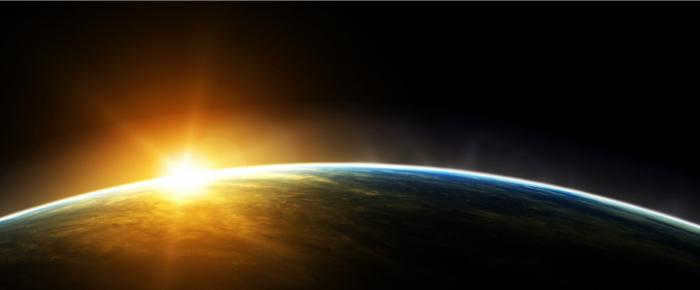
The concept of cosmos, according to philosophers from the 19th and 20th centuries, encompasses the fusion of art and religion, physics and metaphysics, as well as knowledge about the surrounding world and human nature.
Conclusions
It can be logically deduced that the cosmos refers to the unified space. Philosophical and scientific concepts regarding the cosmos share a similar nature, except for ancient times. The topic of “space” has always been of interest and has sparked curiosity among individuals.
Today, the universe still holds numerous enigmas and mysteries, waiting to be unraveled by you and me. Each individual who ventures into space discovers something new and extraordinary, sharing their experiences with humanity as a whole.
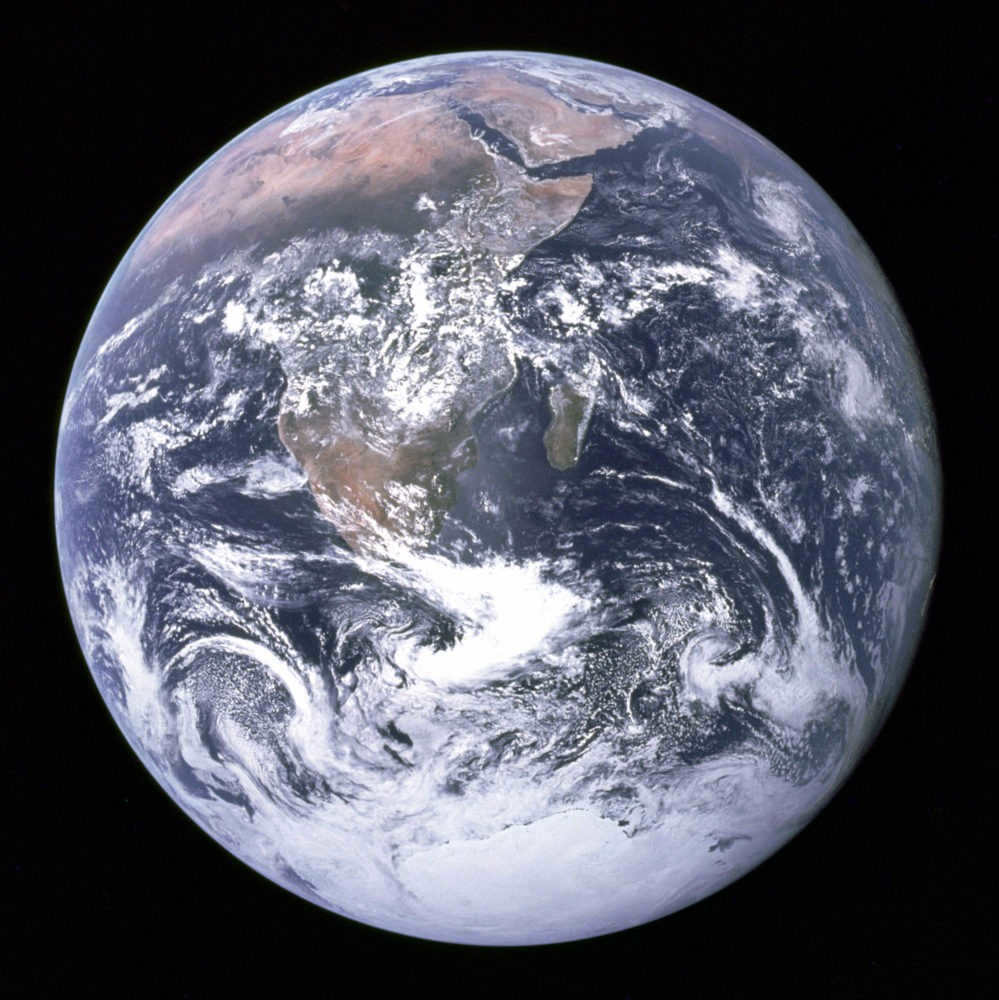
Earth is the sole known location in the cosmos where existence of life is present. The biosphere is merely a thin layer enveloping the surface of our celestial body. Its upper limit is situated at an altitude of approximately 20-22 km. Beyond this point starts a region saturated with intense radiation and ultraviolet rays – even microorganisms and fungal reproductive bodies are incapable of surviving in this hostile environment. At an elevation of one hundred kilometers above the Earth’s sea level lies the Karman line – the officially recognized demarcation between the vast expanse of space and the Earth’s atmospheric envelope.
Humanity has been engaged in the study of the cosmos since ancient times. Initially, it simply observed the movements of planets and stars using only the naked eye, but then advanced to the invention of the telescope for this purpose. The true breakthrough in the exploration of space occurred in the previous century. The rapid advancement of rocket technology enabled the first human to be sent into orbit, to reach other celestial bodies within our solar system, and to observe the most distant galaxies and nebulae. As our understanding of the Universe grows, it becomes increasingly apparent that the Earth is but a minuscule grain of sand in the vast expanse of the cosmos.
What we should include in this concept
Outer space encompasses the vast regions of the Universe that extend beyond the atmospheres or solid layers of celestial bodies. To the ordinary individual, space may appear as a vast void, a vast emptiness, where planets, stars, and galaxies seem to “float,” and where interplanetary probes and other objects traverse. However, this perception of outer space is inaccurate: while the density is low outside of our atmosphere, it is far from being empty. It is teeming with interstellar gas, dust particles, and various forms of radiation. Additionally, enigmatic dark energy and matter also exist within this realm…
Actually, it’s even more intricate than that. Initially, the philosophical connotation of the Greek term “cosmos” was associated with the area encompassing our planet. In Western European languages, derived from Latin, it denotes the incomprehensible vastness of the cosmos. The Russian expression “outer space” is somewhat redundant but has gained familiarity over time.
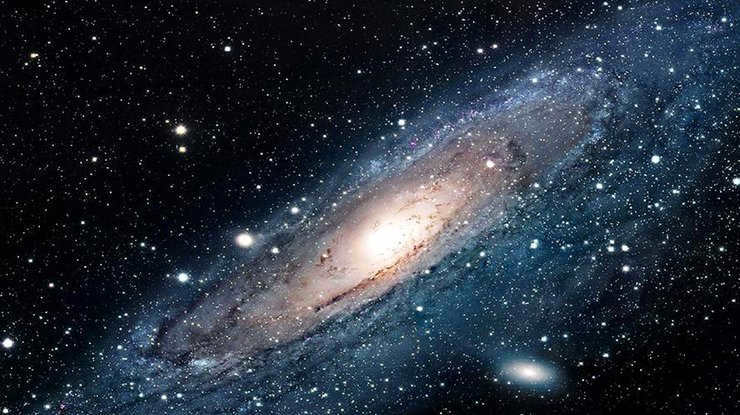
Furthermore, this definition encompasses several aspects. Astronomers associate it with the motion of celestial bodies and their interactions. Physicists discuss the remarkable properties of the vacuum, the theory of relativity, and the fluctuations that give rise to new elementary particles. Engineers focus on the challenges of space exploration. Lawyers are primarily concerned with the legal framework for utilizing space.
Outer space can be divided into various categories:
There is no precise demarcation of space, as air density and atmospheric pressure gradually decrease. The U.S. Air Force defines the boundary as starting at an altitude of 50 miles (80.5 km). Another perspective places the line at 122 km, where the effects of winds cease and the impact of cosmic particles begins.
Atmosphere and the Space Near Earth
The atmospheric pressure at sea level measures 101.325 kPa, equivalent to one atmosphere. Nearly 99% of the global population lives below an altitude of 2 km. Only acclimatized individuals, such as the Himalayan Sherpas, can sustain themselves above this threshold, while others experience “mountain sickness” due to oxygen deprivation. The lower layer of the atmosphere, which extends up to 7 km, contains the majority (approximately 80%) of its mass.
At an altitude of 5 kilometers, the atmospheric pressure decreases by half, and the boundary between the troposphere and the stratosphere is located at 12 kilometers. Above this boundary, clouds no longer form. Passenger airliners have a maximum operational altitude of 12 kilometers, and it also represents the limit for short-term breathing of pure oxygen.
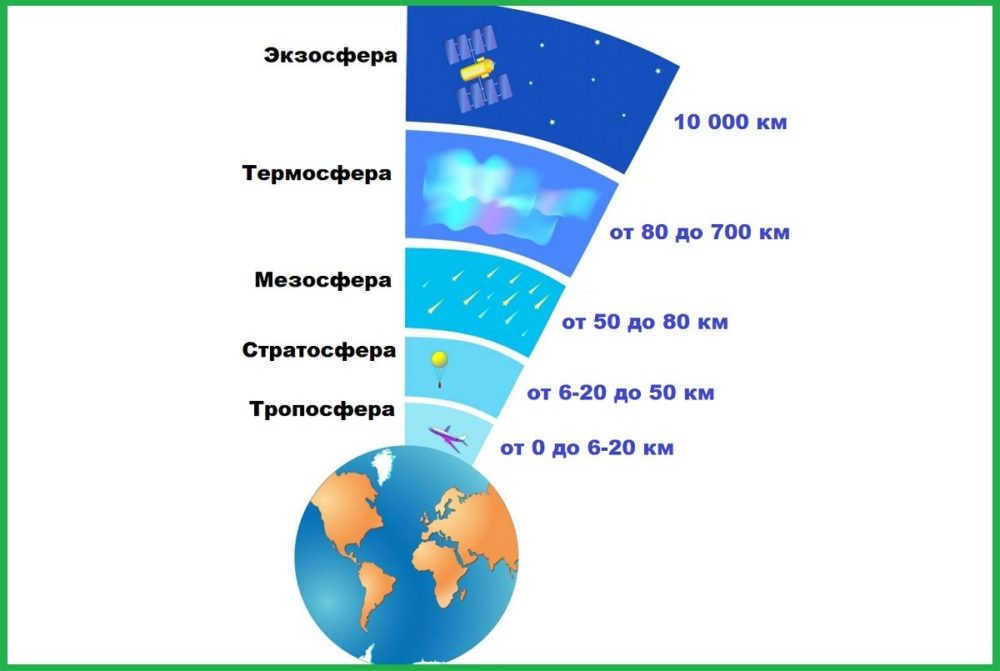
The Armstrong Line, which is located at an altitude of 18.9-19.35 kilometers, marks the boundary between Earth’s atmosphere and outer space for the human body. It is at this point that the boiling of saliva and tears occurs, and the eyes start to swell. Above a height of 20 km, even bacteria cannot survive, making it the limit of the biosphere. Most jet airplanes have a maximum flight altitude of 25-26 km. In the middle latitudes, between 20-25 km, there is a protective ozone layer that shields the planet from harmful ultraviolet radiation.
Located at an elevation of 35 km is the renowned triple point of water – owing to the diminished atmospheric pressure, it reaches its boiling point at a temperature of 0 °C. At an impressive altitude of 37.8 km, an aircraft with a turbojet engine accomplished a remarkable feat, setting a new record. This remarkable achievement was accomplished by a Soviet MiG-25M fighter jet. Furthermore, the highest altitude ever reached by a person in an airborne vehicle stands at an impressive 41.42 km. This extraordinary accomplishment is documented in the esteemed Guinness Book of Records. As one ascends to an elevation of 50 km, they reach the boundary dividing the stratosphere from the mesosphere.
The Karman line, which is located 100 km above the Earth’s surface, marks the beginning of outer space. At a similar altitude, there is the Kennelly-Heaviside layer, a region that reflects radio waves. Beyond this boundary lies near-Earth space, which is distinct from other parts of the Universe due to the impact of our planet. This distinction is evident in the presence and concentration of charged particles, their energy levels, and the influence of Earth’s magnetic field. The length of this region is estimated to be around 10-12 times the radius of the Earth. However, some astronomers believe that it may extend all the way to the orbit of the Moon.
When large meteors and bolides enter the Earth’s atmosphere, they start to disintegrate at a height of 135 km. The region of stable low-Earth orbits begins at an altitude of 160 km. The Fau-2, the first space flight in 1944, reached an altitude of 188 km, while Gagarin’s flight reached 302 km. At a distance of 350 km from the Earth’s surface, the lowest orbits with long-term stability begin. The International Space Station (ISS) orbits at an altitude of approximately 400 km. In contrast, ballistic missiles (ICBMs) reach their highest point at around 1,300 km during their trajectory.
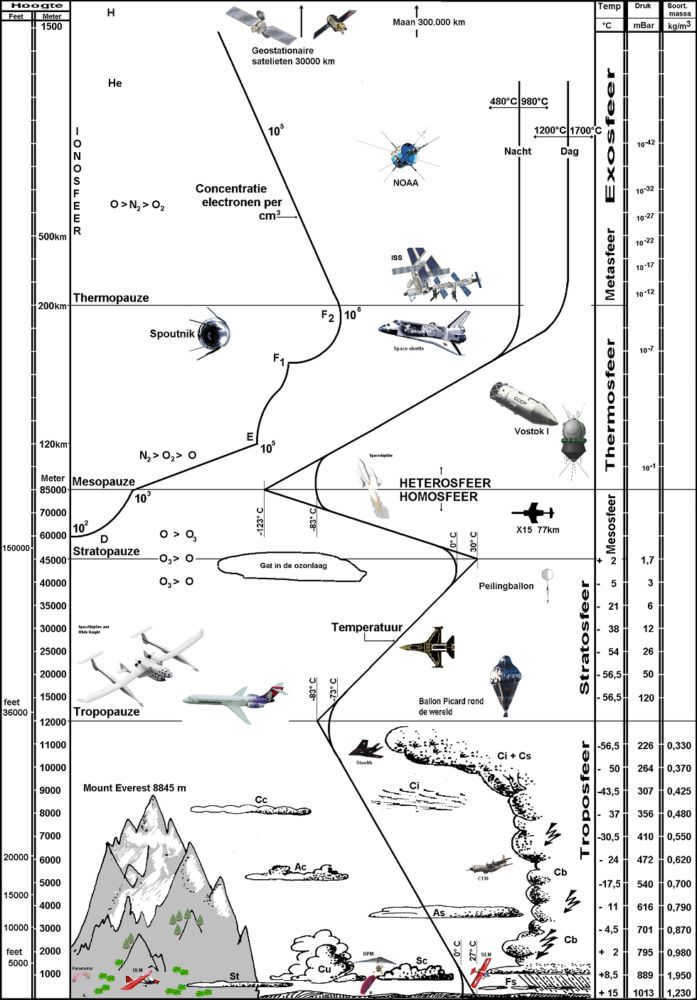
The boundary between low and medium Earth orbits is located at an elevation of 2,000 km. In this region, the presence of the atmosphere has no effect, allowing satellites to remain in orbit for extended periods of time. The upper boundary of the exosphere is found approximately 100,000 km away from the Earth’s surface.
Interstellar space refers to the area of the cosmos that is confined by the path of the most distant planet encircling a star. It is evident that among the numerous star systems that are currently known to researchers, our own system has been the most extensively investigated. Positioned at the core of our system is the Sun, whose influence plays a crucial role in shaping the characteristics of interstellar space. Orbiting around it are eight celestial bodies: four possess solid terrestrial terrains, while the other four are colossal gas giants. Neptune occupies the farthest position from the Sun, while Mercury resides in closest proximity.
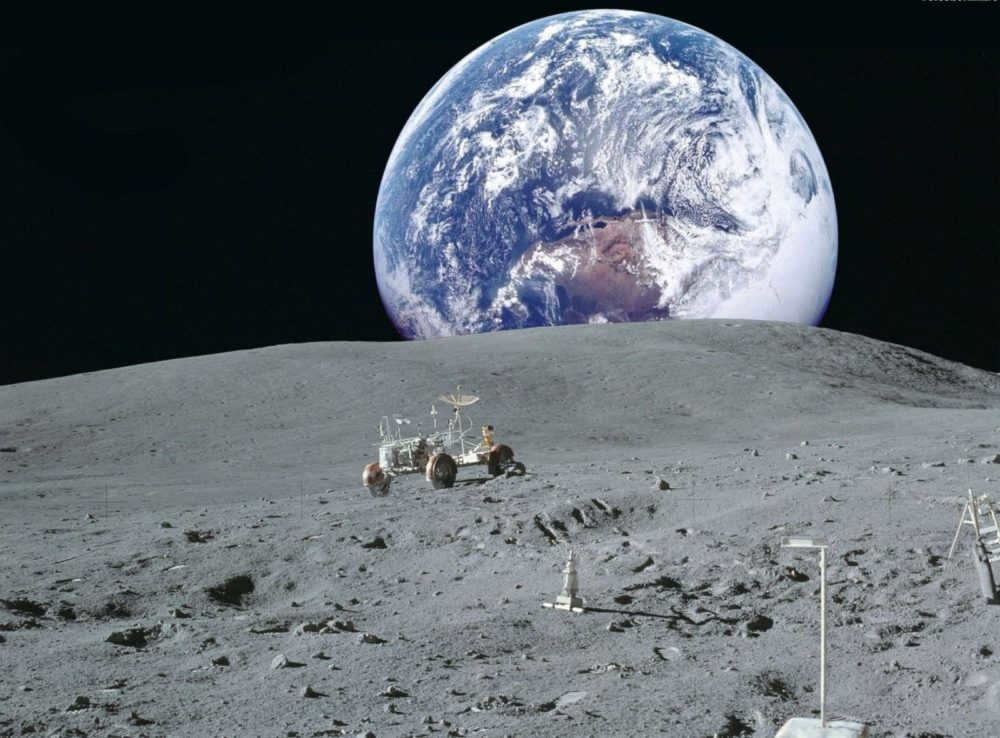
The region between planets and beyond is known as interplanetary space, which eventually transitions into interstellar space. The point at which this transition occurs is called the heliopause and is located at a distance of 120-160 astronomical units from our star. Although the density of matter in the solar system is relatively low, it is not a complete vacuum, as it contains dust, particles, radiation, and plasma. The amount of matter decreases as you move away from the center of the system.
One of the most significant elements of interplanetary space is the solar wind, a stream of ionized particles emitted by the Sun. The speed of the solar wind can vary from 300 to 800 km/s, and its temperature is approximately 105 degrees Kelvin.
The Earth has a radius of 260 thousand km, at which point its attraction surpasses the gravitational pull of the Sun. The Lagrange points are located at a distance of 1.5 million km, and beyond 21 million km, the Earth’s gravitational influence on passing objects completely disappears.
Our planet is situated approximately 150 million km away from the Sun, which is equivalent to one astronomical unit. Neptune, on the other hand, is located 450 billion km away from the Sun, which is equivalent to 30 astronomical units. Beyond Neptune lie clusters of comets, asteroids, and small planets, which make up the Kuiper belt and the Oort cloud.
In order to reach the outer limits of the heliosphere, future astronauts will need to traverse a distance of 11-14 billion kilometers. The Voyager-1, an automated spacecraft, had already flown an impressive 35 billion kilometers or 230 astronomical units (a. e.) by June 2020. It is projected that by the end of the century, the Voyager-1 will have completed a journey spanning 65 billion kilometers.
Beyond our Solar System
Interstellar space refers to the areas within galaxies that are devoid of celestial bodies. Instead, these regions are filled with interstellar gas, dust, radiation, and electromagnetic fields. Additionally, there exists a mysterious substance known as dark matter.
The composition of interstellar space is a result of both primary nucleosynthesis, which occurred after the Big Bang, and nuclear reactions happening within stars. The distribution of matter within interstellar space is highly diverse, with varying temperatures and clusters of hot gas. Its distinguishing characteristic is its low density, with no more than 1,000 atoms per cubic centimeter.
The evolution of interstellar matter is closely tied to the processes that have taken place within galaxies over billions of years.
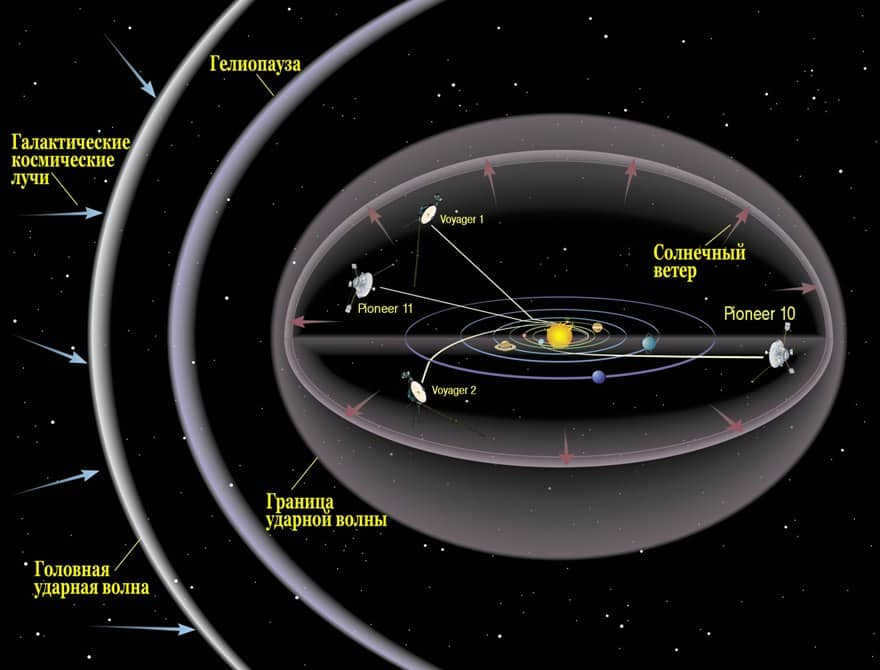
The region of the Universe beyond the galaxies, known as intergalactic space, is characterized by its lack of matter. It can be considered a vacuum as there is virtually no matter present. In fact, there is only one hydrogen atom per cubic decimeter in this vast expanse. The temperature of the intergalactic gas is an astounding ten million degrees Celsius.
When discussing the organization of the universe on this scale, distances are measured in billions of light years or millions of parsecs. For instance, the Virgo Local Superscope, which encompasses our own Milky Way galaxy, spans a distance of 200 million sv. years. The Pisces-Keith Superscope Complex goes even further, stretching over 1 billion sv years. The visible matter in the known Universe has a limit of 26 billion sv years. In total, there are estimated to be around 500 billion galaxies in this vast expanse.
A brief overview of dark matter
Only a small fraction of the matter in our Universe consists of visible astronomical objects such as stars and galaxies. The majority of the matter is made up of dark matter, a mysterious substance that neither emits nor absorbs electromagnetic radiation. The term “dark” simply means that it is impossible to observe this phenomenon, and does not imply anything sinister or terrifying. While physicists, astronomers, and cosmologists do not fully understand what dark matter is, its existence is widely accepted.
Dark matter has very minimal interaction with ordinary matter, making it incredibly challenging to detect. The gravitational effects it has on astronomical objects are the only clues we have to its existence.
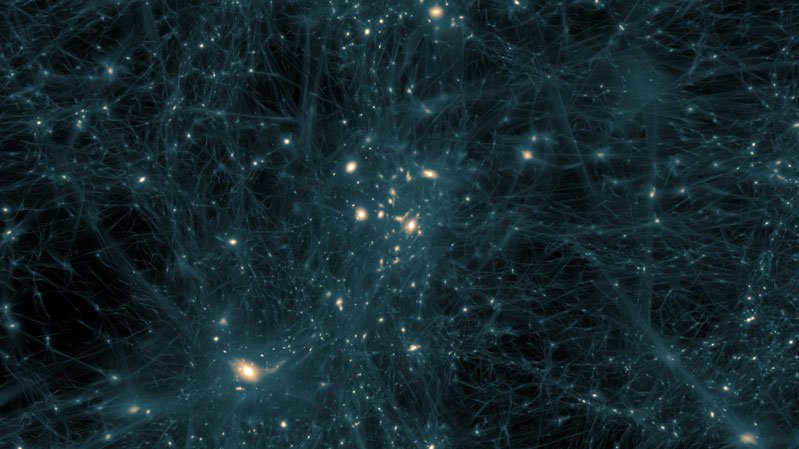
According to certain theories, the majority of the Universe is composed of dark matter and energy, while stars and other celestial bodies make up less than 1% and intergalactic gas occupies another 3.6%. The notion of dark matter in the Universe was initially proposed by astronomer Fritz Zwicky in 1933. Zwicky examined the velocities of galaxies and concluded that their stability necessitated a mass that was several times greater than the combined weight of their individual stars. Initially, this research did not receive much attention, but soon other astronomers began obtaining similar findings.
It is undeniable that the presence of additional or concealed mass, known as “dark matter,” is crucial for the formation of stars and galaxies following the Big Bang. However, the composition and nature of dark matter particles still elude us.
Various hypotheses have been put forth to explain this enigmatic substance, yet none have been substantiated. Numerous research teams across different countries are engaged in the pursuit of understanding dark matter, yet, unfortunately, no breakthroughs have been made thus far. It seems that dark matter only interacts with our universe through gravity, which current detectors are unable to detect.
The influence of outer space on the human organism
For over fifty years, humanity has been actively engaging in the exploration of the space surrounding Earth, granting us valuable knowledge regarding its impact on our physical well-being. Contrary to commonly held belief, an individual exposed to the vacuum of space without a proper spacesuit will not endure immediate dismemberment nor have their blood boil within their veins. In fact, instantaneous loss of consciousness is not even an imminent danger. Rather, the lack of oxygen would lead to suffocation, resulting in the individual’s demise.

There is a recorded incident in the history of NASA where an individual experienced a situation similar to being in a space vacuum due to damage to their spacesuit. The pressure dropped to below 1 Pa, causing the person to lose consciousness after just 14 seconds, which is the time it takes for the brain to begin experiencing oxygen deprivation. They only regained consciousness once the pressure was increased to an altitude of 4.6 kilometers. The astronaut later described the sensation of losing air and having their saliva boil on their tongue.
In the mid-1990s, a similar incident occurred in 1960. While ascending in an open balloon to a height of 19.5 miles, the pilot’s spacesuit sleeve experienced a depressurization. This caused significant discomfort, but upon returning to the lower atmosphere, the discomfort disappeared without any major adverse effects.
Space exploration
In order to surpass the gravitational pull of our planet and achieve orbit, a physical object needs to reach the initial cosmic velocity of -7.9 km/s. The Soviet spacecraft Sputnik 1 accomplished this feat in 1957.
To overcome Earth’s gravity and venture into interplanetary space, a vehicle must travel faster than 11 km/s. This is known as the second cosmic velocity. The Soviet automated probe Luna-1 was the first to achieve this milestone in January 1959.
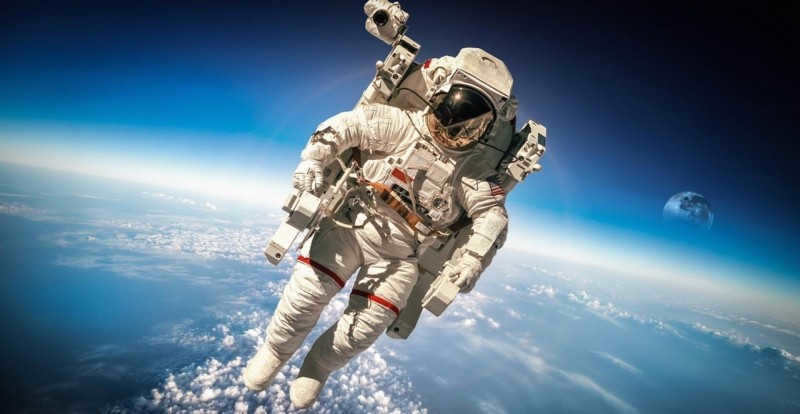
In order to venture into the depths of interstellar space and defy the gravitational pull of the Sun, one must achieve the elusive third cosmic velocity, which amounts to 16.67 kilometers per second. Up until now, the spacecraft known as New Horizons held the record for the highest departure velocity from Earth, reaching an impressive speed of 16.26 km/s. Along its trajectory, it managed to gain an additional 4 km/s through skillful gravitational maneuvering near Jupiter. This remarkable feat positions New Horizons to eventually break free from the confines of our solar system and journey into the vastness of interstellar space.
To surmount the gravitational force of the Milky Way and venture beyond its boundaries, the fourth cosmic velocity is required, measuring at an astounding 550 km/s. In comparison, the Sun’s speed relative to the center of our galaxy is a more modest 220 km/s.
Legal framework for exploring the Universe
The exploration of outer space presents a novel and distinctive realm for human endeavors, one that we are only just embarking upon. Given its unique characteristics, research in this field is predominantly conducted on an international scale. As a result, the advent of the space age gave rise to a new branch of law specifically tailored to regulate relations between states and organizations engaged in this particular domain. Today, the legal framework is governed by several international treaties pertaining to outer space, each adopted at different points in time.
The groundwork for this field was laid even before orbital launches commenced, in the late 1950s, under the auspices of the United Nations. The initial proposals under consideration were centered around the peaceful utilization of outer space and the prohibition of nuclear weapons testing in orbit.
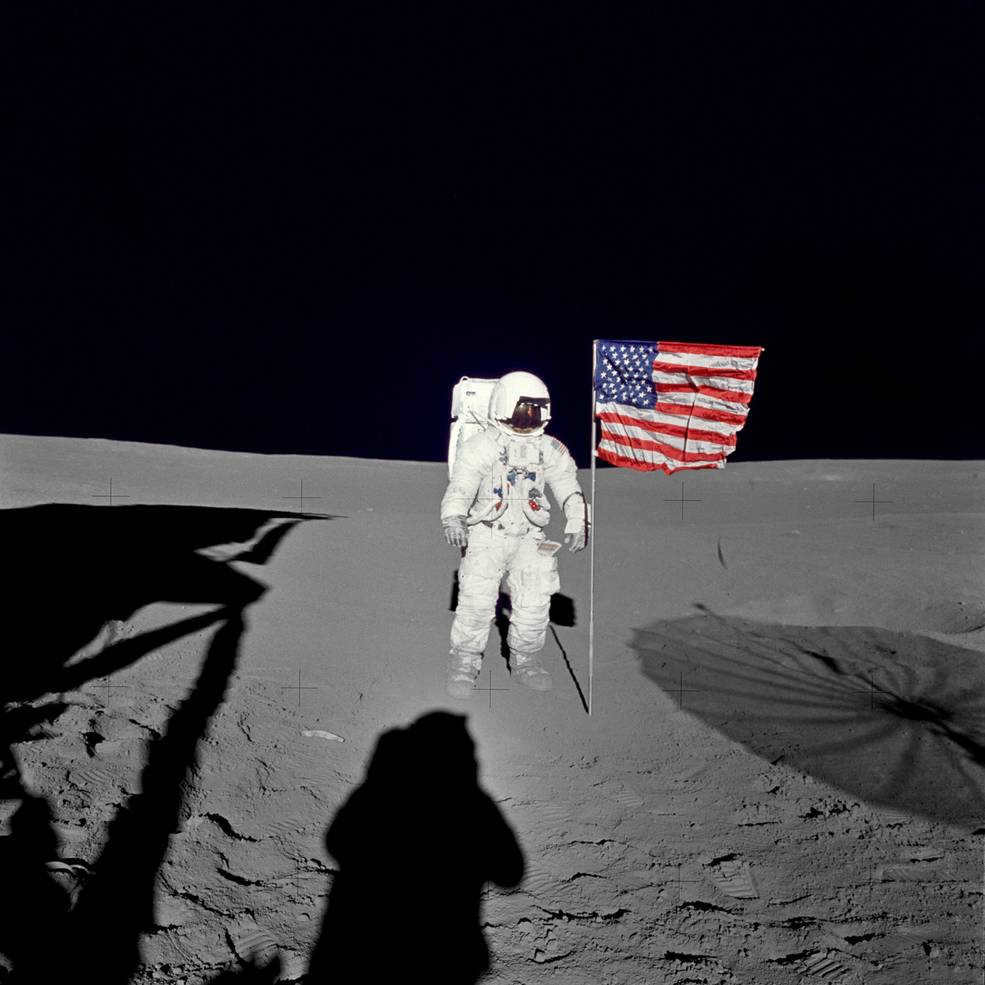
In the wake of the Sputnik 1 launch, the UN General Assembly swiftly called for the establishment of a body to oversee and ensure the peaceful and non-military utilization of outer space. To address this issue, a special resolution was passed. In 1958, the United Nations set up the Committee on the Peaceful Uses of Outer Space (COPUOS) to investigate the legal challenges associated with exploring the space near our planet. COPUOS remains active today and is composed of two subcommittees: one focusing on legal matters and the other on scientific and technical aspects.
We can say that during those years, the groundwork for international space law, which governs activities in this field, was laid. The primary principle was clearly stated from the UN platform: outer space and celestial bodies are open for exploration and development and cannot be claimed by any one state. Space should be utilized for the collective benefit of humanity.
In 1967, the Treaty on the International Regime for the Use of Outer Space and Celestial Bodies, including the Moon, was ratified. In 1968, the Agreement on the Rescue of Astronauts was established, and in 1972, the Convention on Liability for Damage Caused by Spacecraft was introduced. In 1979, the Agreement on Activities on the Moon and Other Celestial Objects was signed.
The year 1982 saw the adoption of the Radiocommunication Convention, which provided regulations for the utilization of radio frequencies and the geostationary orbit.
In the 1980s, the Committee proceeded to formulate multiple global agreements aimed at preventing the deployment of space-based anti-satellite weapons. A similar document was presented to the United Nations by Russia and China in 2006. In 2011, the General Assembly passed a resolution that included recommendations for fostering trust among nations in their space activities.
The existing treaty framework establishes a distinct set of rules for outer space in contrast to airspace. The sovereignty over airspace lies with the State where it is situated. However, space poses a unique challenge as there is no universally agreed-upon definition for the altitude at which it commences. Currently, there are over thirty hypotheses attempting to delineate the boundary between near-Earth space and the atmosphere, but none of them have achieved widespread consensus or overwhelming support.
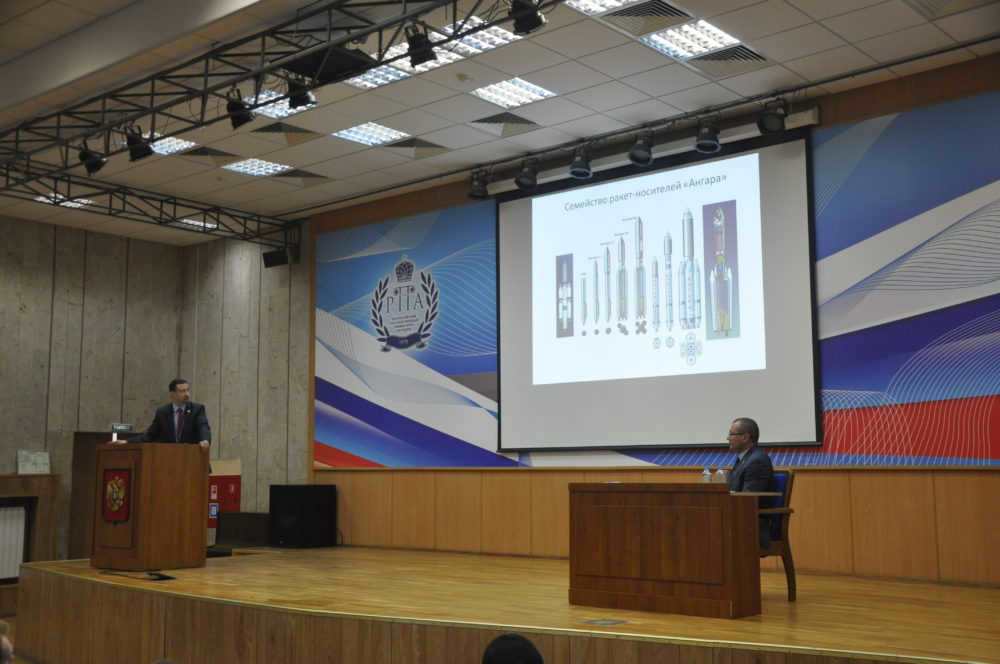
In 1979, the Soviet Union put forward a proposal that space should officially begin at an altitude of one hundred kilometers above sea level. However, the United Kingdom and the United States disagreed with this idea, arguing that it would only serve to hinder space exploration.
Later on, a number of countries located along the equator claimed sovereignty over the geostationary orbit due to its specific position. However, the international community did not support this assertion.
The emergence of new space-faring nations, the increasing number of launches, and the development of advanced spacecraft only serve to further complicate the situation and make finding a solution to this issue nearly impossible.
Pollution and Militarization of Earth’s Orbit
Within a relatively brief timeframe, mankind has successfully created a significant predicament in outer space, causing pollution in the orbit through the accumulation of debris from satellites and various spacecrafts. At present, the U.S. Strategic Command catalog has recorded approximately 16,000 near-Earth objects, while its Russian equivalent has listed 17,000. In actuality, the exact number of objects currently orbiting remains unknown, posing a significant challenge.
Objects such as upper stages, spent satellites, and second stages of rockets, as well as instruments misplaced by cosmonauts, are currently orbiting the Earth, posing a threat to functioning vehicles and the population. The issue of space pollution is a grave one, and if this trend continues, we may find ourselves unable to launch satellites in a matter of decades. Although accidents involving space debris have occurred, we have been fortunate enough to avoid any human casualties thus far.
Equally concerning are the dangers associated with the utilization of radioactive materials in space: numerous spacecrafts are equipped with nuclear propulsion systems. In 1978, the Soviet military satellite Cosmos-954, which contained thirty kilograms of uranium, crashed in northern Canada. Luckily, the incident occurred in a sparsely populated area, resulting in minimal damage; however, it sparked a significant scandal.
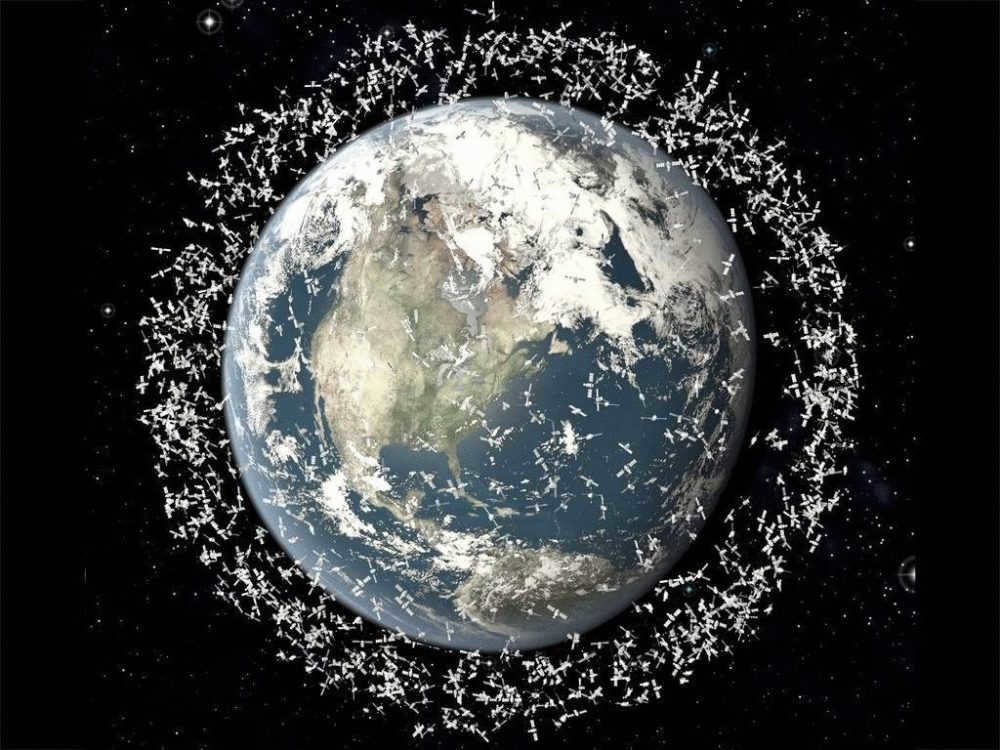
According to different calculations, there might currently exist several dozen to hundreds of spacecraft carrying radioactive substances in space.
Regrettably, a practical method for “tidying up” the Earth’s orbit is yet to be discovered. Currently, our only option is to monitor hazardous objects and prevent them from colliding with functioning spacecraft.
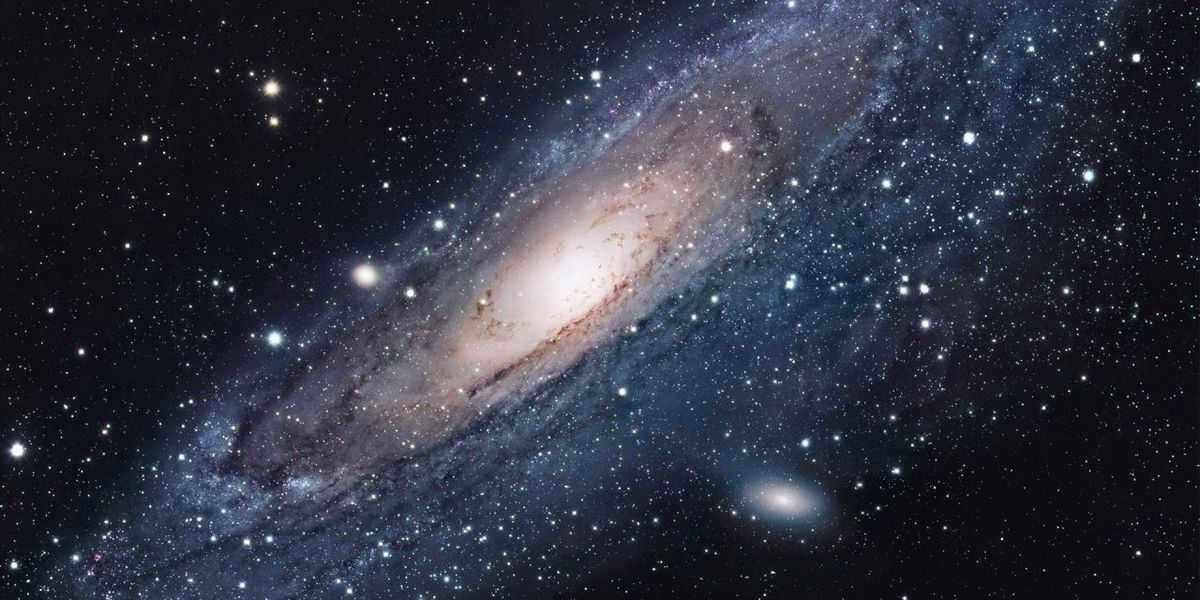
(Greek: kosmos – Universe) – the concept of the world viewed as a harmonious unity (in contrast to chaos); originally, it denoted the same as order, arrangement. Pythagoras was the first to use the term kosmos to describe the world, highlighting its inherent order and balance.
(Greek: kosmos – Universe) – the concept of the world viewed as a harmonious unity (in contrast to chaos); originally, it denoted the same as order, arrangement. Pythagoras was the first to refer to the world as the cosmos, emphasizing its order and harmony. Plutarch commends the cosmos in his Natural History. Cosmic sensation, also known as cosmic feeling, refers to the profound sense of interconnectedness with the cosmos (see also Fedorov). Cosmic is an adjective that pertains to the world, cosmos, and is specific to the cosmos, as well as originating from it (for example, cosmic rays).
Cosmos
(Greek) The universe, as opposed to the world, which can refer to our planet or the Earth.
Cosmos
A notion initially introduced by Pythagoras to signify the unity of the world and the antithesis of disorder. The fundamental characteristic of the cosmos.
First introduced by Pythagoras to signify the unity of the world and the opposite of disorder. The main attribute of the cosmos was considered to be the harmony of the celestial spheres. Throughout the history of philosophical thinking, the utilization of this notion either resulted in the acknowledgment of the creator’s role (demiurge) or in the deification of the cosmos itself in the form of pantheism or cosmotheism. With the advancement of space exploration, the concept of space has come to encompass the portion of the solar system and the universe that has been investigated by humankind.
Cosmos
(Derived from the Greek word “kosmos”, meaning “universe”) – refers to the entirety of the world, encompassing all moving matter, including the Earth and the solar system.
(Derived from the Greek word “kosmos”, meaning “universe”) – signifies the entirety of all moving matter, including the Earth, the solar system, our own galaxy, and all other galaxies. With advancements in astronautics, however, the term “cosmos” is now often used to describe a smaller portion of the universe, specifically the region surrounding the Earth, excluding the Earth itself, referred to as “extraterrestrial”. In this context, the boundaries between the Earth and the cosmos, as well as between the cosmos and the rest of the universe, are typically undefined (Cosmology).
Universe
– in the mythological system of the planet – the cosmos, world arrangement, antithesis to disorder.
Universe
– in classical Hellenic philosophy, the planet as an exquisite balanced entirety, a living creature gifted with the World Spirit and the World Spirit.
In ancient Greek philosophy, the cosmos was perceived as a beautiful and harmonious entity, a living organism endowed with the World Soul and World Mind. Stoicism viewed the cosmos as “the state of gods and men”. In antiquity, the world was seen as a sacred realm that could only be perceived as a cosmos, a sacred world, as stated by M. Eliade. Even today, humanity still longs for the originally pure and sacred cosmos. However, in modern philosophy, the cosmos has become less sacred due to the advancements of science and technology. It is now understood simply as the order of things, the universal connection of everything, the universe as a whole, with occasional attempts to identify the deeper sources of cosmic organization. These attempts are motivated by the exploration of non-traditional forms of understanding nature that go beyond science and Christian philosophy. The cosmos is seen as the opposite of chaos, which represents decay, disorder, and the extinction of life and light in the universe. In Russian religious philosophy, the cosmos is conceptualized as a manifestation of divine glory, in contrast to world-denying tendencies that describe it as a dark and irrational unity of soulless and absurd vital elements ruling over humanity. M. Eliade emphasized the importance of recognizing the vertical dimension of the cosmos in ancient mythology, which leads to the acknowledgment of the supreme Creator: “The very structure of the cosmos preserves the memory of the Supreme Celestial Being”.
– A term originating from ancient Greek philosophy that refers to the world as a whole that is organized and ordered in a structural manner.
– Cosmos, which comes from the ancient Greek word “kosmos” meaning arrangement, orderliness, and ornamentation, is a philosophical concept that encompasses the ideas about the world.
Cosmos
(Greek: kosmos – arrangement, orderliness, ornamentation) is a philosophical category that encompasses the concepts and notions of the world as a unified and structurally organized entity, functioning in accordance with inherent regularity. It serves as a fundamental concept within metaphysics (refer to Metaphysics, Logocentrism).
The key characteristics of Cosmos include:
1) Formalization, represented by a definite and configured appearance;
2) Differentiation, which involves the separation and formation of constituent parts;
3) The concept of structurality refers to the arrangement of elements in a hierarchical manner.
4) The immanent evolutionary potential of K. is typically manifested through cyclic-pulsation dynamics.
5) K. is characterized by regularity and subordination to an internal measure, similar to the philosophical concepts of “nous” or “logos”, which serve as organizational and dynamic principles.
6) The beauty of K. is considered to be its aesthetic perfection (similar to the root cosmetic in European semantics), its harmony (described by Heraclitus as “the most beautiful harmony” and Plato’s belief that “K. is the most beautiful of all possible things,” etc.). This quality of K. is thought to be the result of its inner measure (as regularity and order) and the alignment of all cosmic elements and manifestations with this measure (see Beauty). In ancient traditions, K. was often conceptualized as spherical in this context: the sphere being the most balanced, perfect, and self-sufficient of geometrical bodies in the Eleanic concept of existence. This idea of the “harmony of spheres” can be seen in Pythagoras, as well as in the semantic structure of Spyros’ concept of K. being “equal to itself from everywhere” as its initial state in Empedocles and others;
7) Cognizability refers to the rational explanation of the inherent “measure” (order, principle) of K.; predictability allows for the modeling of potential future states of K. based on an understanding of the regularities of its development, which is subjectively perceived by culture as a form of human-dimensionality (coziness) of K. In the categorical structure of European culture, K. is antinomical to Chaos as a formless disorder.
Within the semantic opposition “Chaos – K.”, different levels of correlation between its components can be functionally distinguished:
(a) Morphological correlation: K. opposes the “sightless” (Hesiod) Chaos as formalized, meaning endowed with form as eidos (see Hylemorphism);
b) The substratum relation: K. originates from Chaos as a manifestation of its organization and, essentially, is Chaos itself, albeit in an orderly form, i.e. subjected to the static (structure) and dynamic (regularity) order;
c) In most mythological depictions, the spatial relation of K. is defined by the contrasting elements of the World Tree. Vertically, the trunk separates the different realms of the world, with the sky representing the realm of gods and spirits, the trunk and surrounding space representing the human world, and the roots symbolizing the underground kingdom of the dead (referred to as the “three steps of Vishnu”). Horizontally, the shadow cast by the tree delimits K. from Chaos, acting as the central point in the world while Chaos remains in the chaotic periphery. This is similar to the mythologeme of the Cosmic Bow, where the bowstring sets the boundaries of the decorated universe and the arrow serves as an analog to the World Tree.

